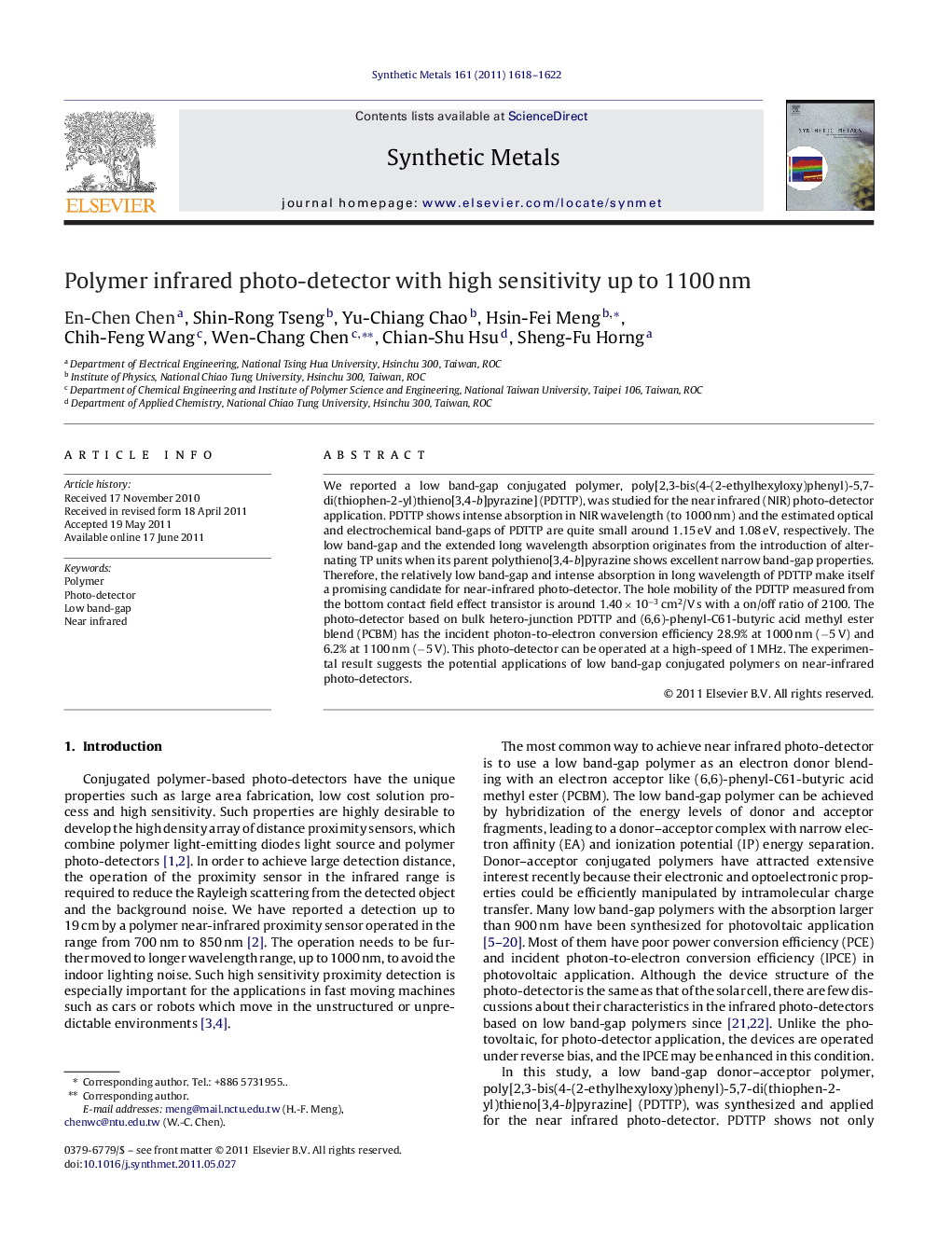| Article ID | Journal | Published Year | Pages | File Type |
|---|---|---|---|---|
| 1441964 | Synthetic Metals | 2011 | 5 Pages |
We reported a low band-gap conjugated polymer, poly[2,3-bis(4-(2-ethylhexyloxy)phenyl)-5,7-di(thiophen-2-yl)thieno[3,4-b]pyrazine] (PDTTP), was studied for the near infrared (NIR) photo-detector application. PDTTP shows intense absorption in NIR wavelength (to 1000 nm) and the estimated optical and electrochemical band-gaps of PDTTP are quite small around 1.15 eV and 1.08 eV, respectively. The low band-gap and the extended long wavelength absorption originates from the introduction of alternating TP units when its parent polythieno[3,4-b]pyrazine shows excellent narrow band-gap properties. Therefore, the relatively low band-gap and intense absorption in long wavelength of PDTTP make itself a promising candidate for near-infrared photo-detector. The hole mobility of the PDTTP measured from the bottom contact field effect transistor is around 1.40 × 10−3 cm2/V s with a on/off ratio of 2100. The photo-detector based on bulk hetero-junction PDTTP and (6,6)-phenyl-C61-butyric acid methyl ester blend (PCBM) has the incident photon-to-electron conversion efficiency 28.9% at 1000 nm (−5 V) and 6.2% at 1100 nm (−5 V). This photo-detector can be operated at a high-speed of 1 MHz. The experimental result suggests the potential applications of low band-gap conjugated polymers on near-infrared photo-detectors.
► A low band-gap conjugated polymer was studied for the near infrared photo-detector application. ► Intense absorption in NIR wavelength (to 1000 nm) ► The estimated optical and electrochemical band-gaps are quite small around 1.15 eV and 1.08 eV, respectively. ► The photo-detector has the incident photon-to-electron conversion efficiency 28.9% at 1000 nm (−5 V) and 6.2% at 1100 nm (−5 V).
